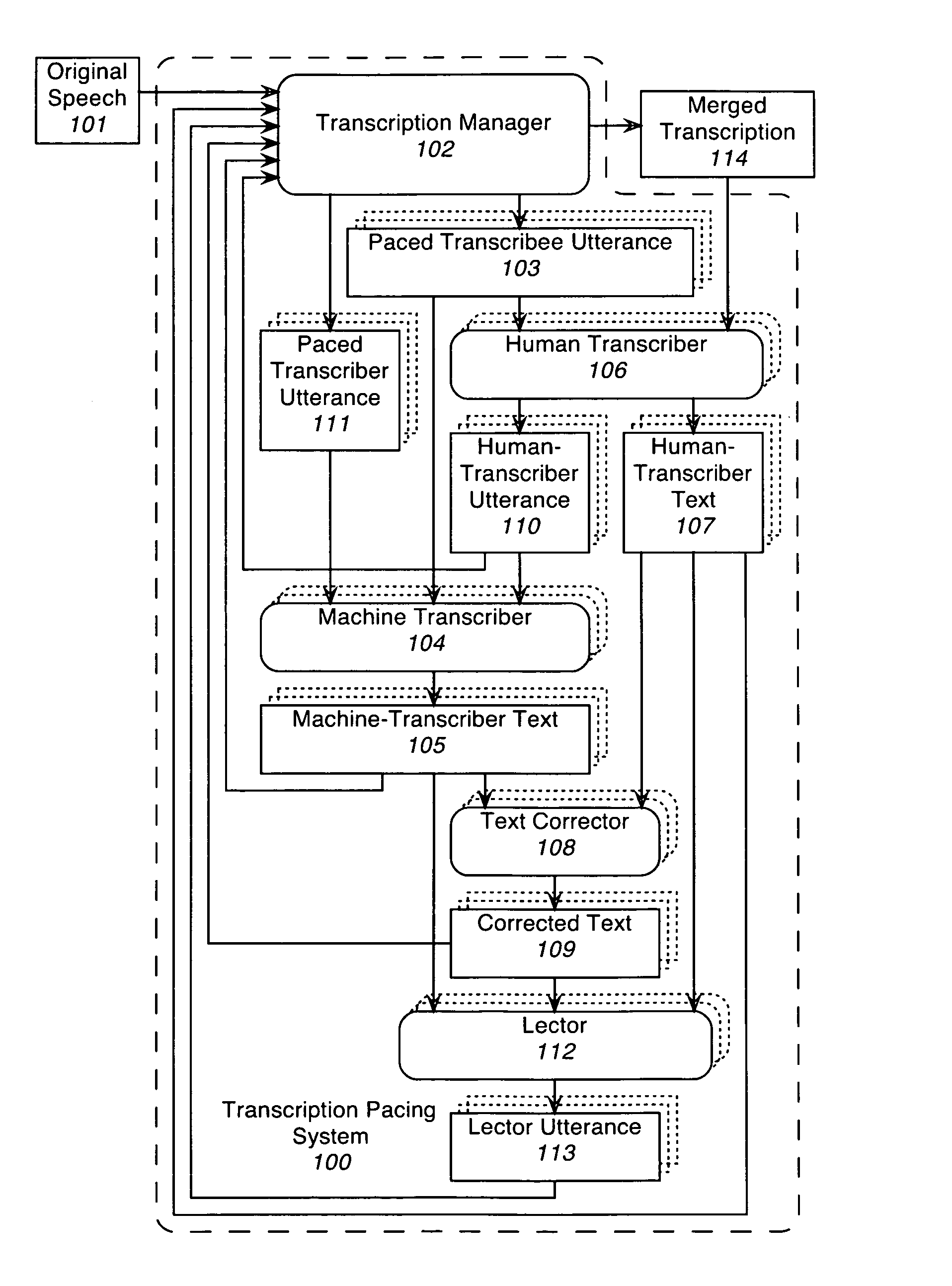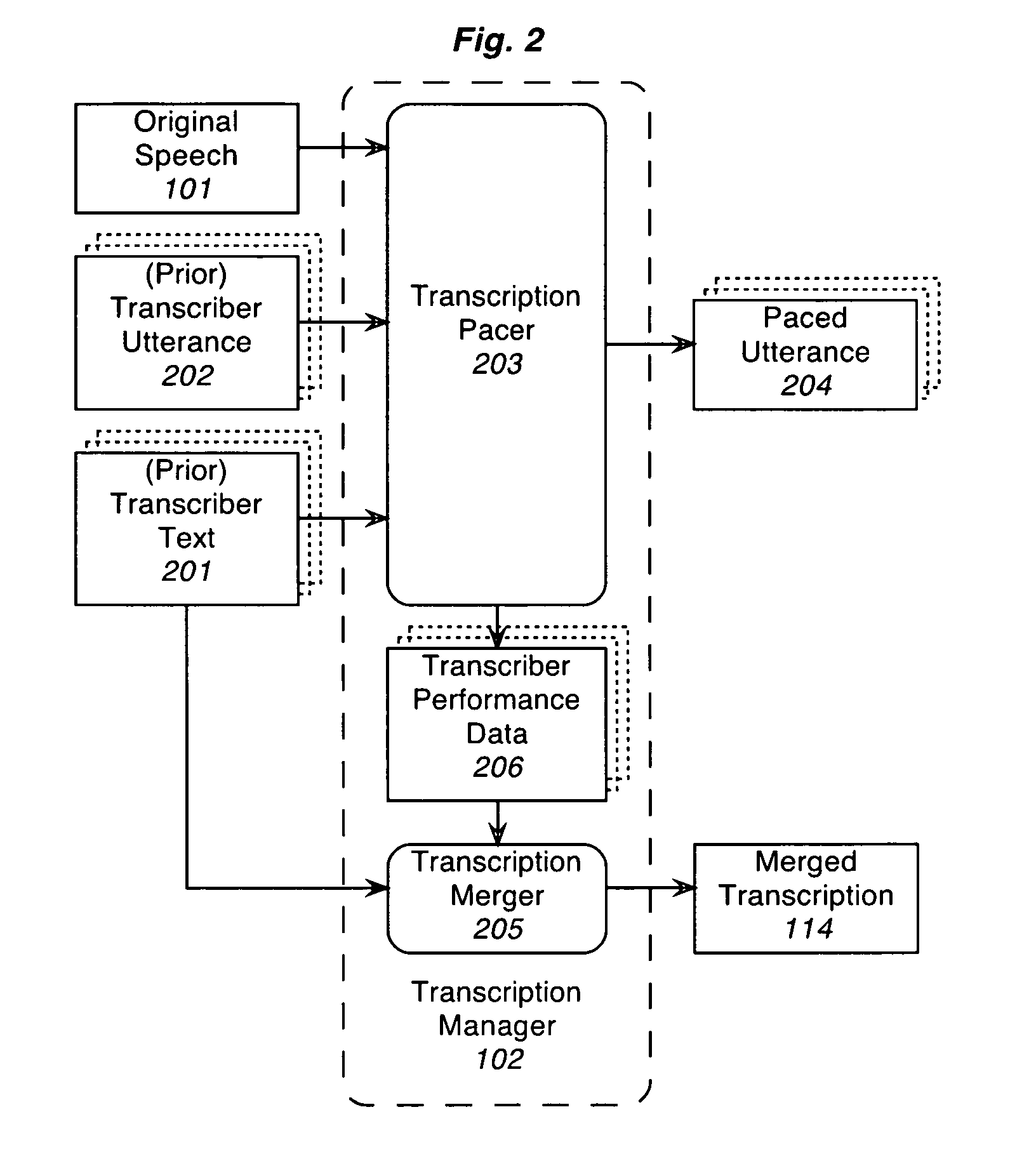Method and system for efficient pacing of speech for transcription
a speech and transcription technology, applied in the field of efficient pacing of speech for transcription, can solve the problems of no existing solution meeting all three, unable to begin to penetrate voice data, and pain in searching or scanning recorded speech, so as to facilitate correction and out-of-sequence playback, improve the efficiency of real-time, and improve the accuracy of comparison and alignment.
- Summary
- Abstract
- Description
- Claims
- Application Information
AI Technical Summary
Benefits of technology
Problems solved by technology
Method used
Image
Examples
Embodiment Construction
[0023]In the following description of a system and method for improving the efficiency of speech transcription, numerous specific details, such as specific voice parameters, speech parameters, typing parameters, linguistic parameters, and acoustic and phonetic representations are set forth in order to provide concrete examples to facilitate a more thorough understanding of the present invention. To those skilled in the art, however, it will be apparent that the present invention may be practiced without these specific details. Moreover, certain well-known features have been described only in general terms, so as not to unnecessarily obscure the present invention.
[0024]In the preferred embodiment of this invention, the transcription-pacing system described herein is incorporated into a networked computer system capable of receiving the original speech from a managing service agent as it is needed, and transmitting the transcription and optionally the transcriptionist's input back to ...
PUM
 Login to View More
Login to View More Abstract
Description
Claims
Application Information
 Login to View More
Login to View More - R&D
- Intellectual Property
- Life Sciences
- Materials
- Tech Scout
- Unparalleled Data Quality
- Higher Quality Content
- 60% Fewer Hallucinations
Browse by: Latest US Patents, China's latest patents, Technical Efficacy Thesaurus, Application Domain, Technology Topic, Popular Technical Reports.
© 2025 PatSnap. All rights reserved.Legal|Privacy policy|Modern Slavery Act Transparency Statement|Sitemap|About US| Contact US: help@patsnap.com



